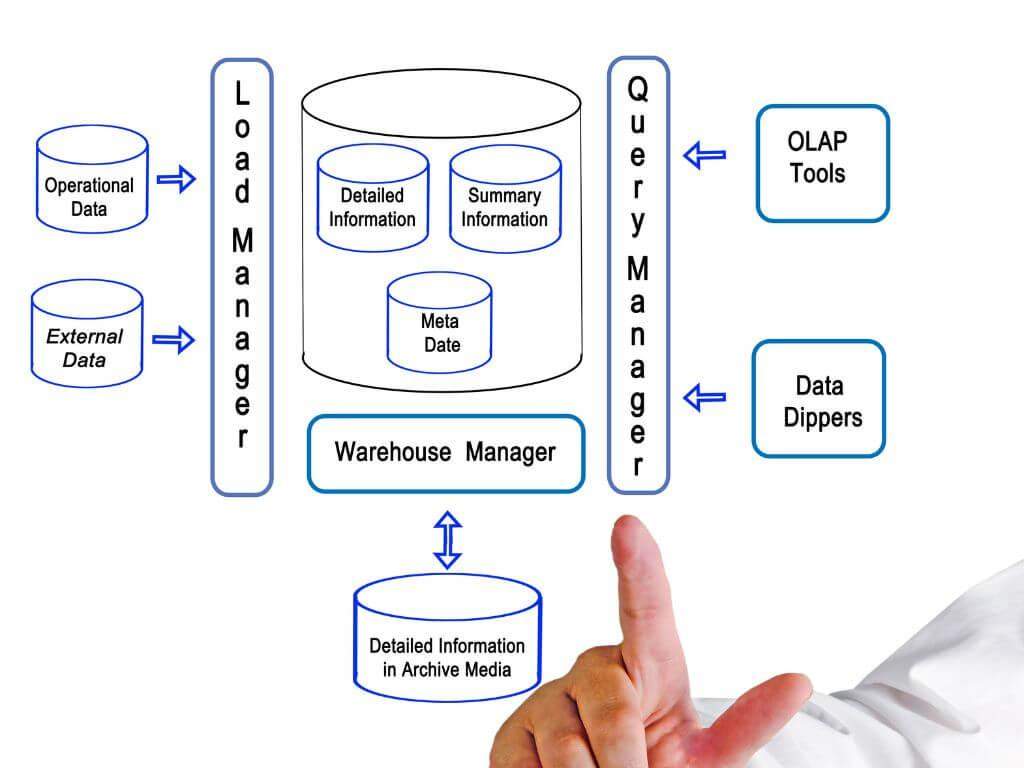Data Analytics Trends 2024: What Does The Year Have in Store?
Posted: February 6, 2024 |
In:
Data Engineering
The landscape of artificial intelligence and data science experienced a significant shift to the forefront of technological innovation in 2023, largely propelled by the rise of generative AI. As we step into 2024, the question arises: what new developments in this field will continue to dominate headlines and how will these trends impact businesses? This year promises to be pivotal, with recent surveys from notable entities like MIT’s Chief Data Officer and Information Quality Symposium, Amazon Web Services, Thoughtworks, and Wavestone providing insights from over 500 senior executives. These surveys, while not predictive, offer a glimpse into the strategic thinking and actions of those at the helm of data science and AI initiatives within their organizations.
One of the most discussed topics is generative AI, which, despite its significant buzz and perceived potential for transformation, faces scrutiny over its actual economic value delivery. Surveys indicate high expectations, with a large majority of executives believing in its transformative capabilities, yet a smaller fraction reports substantial practical applications in production. This gap highlights the nascent stage of generative AI in business, with many companies still in the experimental phase. The journey to fully operationalize generative AI will require not just increased investment but also substantial organizational changes, including business process redesign, employee reskilling, and significant improvements in data management and integration.
In addition to generative AI, the field of data science is undergoing a paradigm shift, moving from an artisanal to an industrial approach. This transition is marked by an acceleration in the production of data science models and an increased reliance on platforms, methodologies, and tools like machine learning operations systems to boost productivity and deployment rates. Furthermore, the concept of data products is gaining traction, with a notable divide in how organizations perceive and manage these products. This year, we also observe a shift in the role of data scientists and AI leaders, who are becoming integrated into broader technology and digital transformation functions. This integration reflects a trend towards unified leadership roles that encompass data, technology, and digital strategy, highlighting a more cohesive approach to managing technological innovation and its application in business.
2024 stands as a critical year for data analytics, marked by evolving roles, shifting paradigms, and the maturation of transformative technologies like generative AI. As companies navigate these changes, the focus will be on how to extract tangible value from these advancements, ensuring that the dazzling potential of AI and data science translates into concrete business benefits.
AI Integration and Automation
As we delve deeper into the landscape of data analytics in 2024, AI integration and automation continue to be pivotal trends. The integration of advanced AI methodologies, such as machine learning and deep learning, into data science workflows is becoming increasingly prevalent. This year marks a significant shift towards leveraging these powerful AI techniques to streamline data processing and analysis. The integration facilitates the creation of more complex and accurate predictive models, enhancing the capability of organizations to navigate through large volumes of data. This trend not only accelerates the speed at which data is analyzed but also substantially improves the quality of insights derived, enabling businesses to make more informed decisions.
The impact of AI integration in data science is multifaceted. One of the key benefits is the automation of routine data processing tasks, which traditionally consumed considerable time and resources. By automating these processes, data scientists can focus on more strategic aspects of their work, such as interpreting data patterns and developing innovative algorithms. Furthermore, the use of machine learning and deep learning in predictive analytics has revolutionized the way organizations forecast future trends and behaviors. These advanced AI techniques allow for the analysis of complex data sets, uncovering hidden patterns and relationships that were previously undetectable. This capability is invaluable in sectors where predictive accuracy can significantly influence strategic decisions, such as finance, healthcare, and retail.
As we progress through 2024, the integration of AI in data science is not just about the enhancement of existing processes but also about the creation of new opportunities and solutions. The advancement in AI-driven analytics paves the way for developing sophisticated models that can handle increasingly complex and dynamic datasets. This evolution is crucial as the volume and variety of data continue to grow exponentially. The ability to effectively harness the power of AI in data analysis will be a defining factor for organizations striving to maintain a competitive edge in an increasingly data-driven world. This trend underscores a larger shift towards a more agile, insightful, and forward-thinking approach in data analytics, aligning closely with the transformative themes anticipated in the field for 2024.
Explainable AI (XAI)
The evolving field of Artificial Intelligence (AI) in 2024 brings with it a growing emphasis on Explainable AI (XAI), a trend that addresses the increasing complexity and impact of AI systems. XAI is dedicated to creating AI models and algorithms that are not just high-performing but are also capable of providing transparent and understandable explanations for their decisions and predictions. This focus on explainability is becoming increasingly important, especially in sectors like healthcare, finance, and law, where the implications of AI-driven decisions are significant and often require a high degree of trust and understanding from both professionals and the public.
In industries such as healthcare, the use of AI to diagnose diseases or recommend treatments demands a level of transparency that allows medical professionals to understand the rationale behind AI-generated conclusions. Similarly, in finance, where AI systems might be used to assess creditworthiness or manage investments, the ability to explain decisions is crucial for maintaining trust and complying with regulatory standards. The legal sector also sees a rising demand for XAI, as AI is increasingly employed to assist in legal research, case analysis, and even predicting case outcomes. In these contexts, the ability to interpret and justify AI recommendations becomes critical for ethical and legal accountability.
The pursuit of XAI in 2024 is driving researchers and practitioners to innovate in developing AI models that balance performance with interpretability. This involves devising new techniques and modifying existing algorithms to make their inner workings more transparent and their outputs more comprehensible. The goal is to move beyond the “black box” nature of many advanced AI systems, where the decision-making process is opaque, towards models that can articulate a clear and logical rationale for their outputs. This shift not only enhances trust and reliability in AI applications but also opens up new avenues for human-AI collaboration, where AI’s analytical capabilities are complemented by human expertise and judgment. The advancement of XAI is a testament to the evolving understanding of AI’s role in society, recognizing that the true potential of AI lies not just in its ability to make decisions but also in its capacity to communicate and rationalize them in a human-centric manner.
Ethical AI and Responsible Data Science
In the dynamic world of AI and data science, the year 2024 marks a heightened awareness and action towards ethical AI and responsible data science. This emerging trend underscores the importance of integrating ethical considerations throughout the entire data science lifecycle, from initial data collection to the deployment of AI models. Responsible data collection practices are being emphasized to avoid invasion of privacy and ensure that the data being used is representative and ethically sourced. Furthermore, the focus is also on fair model training, which involves developing AI algorithms that are free from biases and discriminatory patterns. This is particularly crucial in applications where AI decisions can have significant impacts on individuals, such as in hiring, lending, or law enforcement.
Organizations are increasingly adopting ethical AI frameworks as part of their operational ethos. These frameworks serve as guidelines to ensure that AI applications are developed and used in a manner that respects fundamental human rights, promotes inclusivity, and prevents harm. The implementation of these frameworks involves regular audits, transparency in AI operations, and the establishment of ethics boards to oversee AI initiatives. Moreover, there’s a growing recognition of the need to address biases that can be inherent in AI systems. These biases, often a reflection of historical data or societal inequalities, can lead to unfair outcomes when AI systems are applied. Efforts are being made to develop methodologies for identifying, measuring, and mitigating these biases, ensuring that AI systems operate fairly and justly.
In the realm of research, scholars and practitioners are exploring innovative ways to align data science applications with societal values and norms. This involves interdisciplinary collaboration, bringing together experts from fields such as ethics, law, sociology, and psychology, alongside data scientists and AI developers. The goal is to create AI systems that not only perform efficiently but also embody ethical principles and contribute positively to society. This approach acknowledges the broader impact of AI and data science on society and seeks to proactively address potential ethical challenges. The year 2024 is thus a pivotal point in the evolution of AI and data science, where the focus is shifting from what AI can do to what it should do, ensuring that technological advancements are harnessed for the greater good and aligned with the ethical imperatives of our time.
Edge Computing for Data Processing
The year 2024 marks a significant evolution in the realm of data processing, with the proliferation of edge computing emerging as a game-changer. Edge computing refers to the practice of processing data closer to where it is generated – at the “edge” of the network – rather than relying on a centralized data-processing warehouse. This shift is revolutionizing the way data is handled, particularly for real-time analytics. By processing data near its source, edge computing dramatically reduces latency, which is the delay before a transfer of data begins following an instruction. This reduction in latency is crucial for applications that require immediate processing and response, such as those in the Internet of Things (IoT), autonomous vehicles, and smart city infrastructures.
In the context of IoT, edge computing enables devices to process and analyze data locally, significantly speeding up the decision-making process. This is essential in scenarios where even a slight delay can have significant consequences, such as in industrial automation or emergency response systems. Similarly, in the realm of autonomous systems – such as self-driving cars or unmanned aerial vehicles – the ability to process data on the edge ensures quicker response times, enhancing safety and efficiency. This localized data processing reduces the need for constant data transmission to a central server, thereby decreasing bandwidth usage and mitigating potential network congestions.
Furthermore, industries that require rapid decision-making, such as healthcare, manufacturing, and retail, are increasingly adopting edge computing. In healthcare, for instance, edge computing allows for real-time monitoring and analysis of patient data, facilitating immediate medical interventions when necessary. In manufacturing, sensors on machinery can process data on the spot to predict and prevent equipment failures before they occur, minimizing downtime. In the retail sector, edge computing enables stores to process customer data locally to provide personalized shopping experiences. As we continue through 2024, the integration of edge computing in data science signifies a move towards more decentralized, efficient, and rapid data processing methods, catering to the growing demand for immediacy in the digital era. This trend is not just enhancing existing applications but is also paving the way for new innovations in how we collect, process, and utilize data.
Advanced Natural Language Processing (NLP)
As we progress through 2024, the field of Natural Language Processing (NLP) is witnessing a remarkable evolution, driven by increasingly sophisticated models that are capable of understanding and generating text in a more human-like manner. Advanced NLP techniques, particularly those involving transformer models, have become pivotal in a wide array of applications. These techniques have enabled significant breakthroughs in tasks such as language translation, sentiment analysis, and content generation, marking a new era in how machines understand and interact with human language.
Language translation, an area that has long been a challenge in NLP, is experiencing unprecedented improvements thanks to these advanced models. Transformer-based models, known for their ability to handle long-range dependencies in text, are enabling more accurate and contextually relevant translations. This advancement is not just enhancing communication in a globalized world but also breaking down language barriers in international business, education, and cultural exchange. Similarly, sentiment analysis has become more nuanced and sophisticated. Modern NLP models can now understand and interpret the subtleties and complexities of human emotions in text, allowing businesses to gain deeper insights into customer opinions and feedback. This capability is transforming customer service and market research, offering more precise and actionable insights into consumer behavior.
Content generation, another area where advanced NLP is making significant strides, is enabling the automated creation of realistic and coherent text. This is particularly useful in fields like journalism, marketing, and creative writing, where generating high-quality text content is essential. These NLP models are not only capable of producing text that is grammatically and contextually sound but also tailored to specific styles or topics, thereby enhancing user experiences and engagement. Additionally, the ability of these models to efficiently process and extract meaningful information from unstructured data is revolutionizing data analysis, opening up new possibilities for knowledge discovery and decision-making support in various sectors.
The advancements in NLP in 2024 are therefore not just technical achievements; they represent a significant step forward in the way machines understand and interact with human language. This progress is paving the way for more intuitive, efficient, and effective communication between humans and machines, thereby enhancing a wide range of applications across different industries. As we continue to explore the potential of these advanced NLP techniques, they are set to play an increasingly integral role in shaping our interaction with technology and our ability to harness the vast amounts of unstructured data in the digital world.
Augmented Analytics
The year 2024 marks a significant milestone in the evolution of data analytics with the widespread adoption of Augmented Analytics. This innovative approach integrates advanced technologies such as machine learning and artificial intelligence into the analytics workflow, revolutionizing how data is prepared, insights are discovered, and decisions are made. Augmented Analytics is empowering data scientists by automating repetitive and time-consuming tasks, thereby enabling them to focus on more complex and strategic aspects of data analysis.
One of the key benefits of Augmented Analytics is its ability to automate the process of data preparation, which traditionally involves cleaning, integrating, and transforming data. This automation significantly reduces the time and effort required for data preparation, allowing data scientists to concentrate on extracting meaningful insights. Additionally, Augmented Analytics tools are equipped with sophisticated algorithms that can sift through vast datasets to uncover hidden patterns, anomalies, and correlations. These tools not only recommend insights that might have been overlooked but also provide explanations, making the findings more accessible and understandable to a broader range of stakeholders.
Furthermore, Augmented Analytics is playing a crucial role in facilitating collaboration among diverse stakeholders within organizations. By presenting insights in a more intuitive and user-friendly manner, these tools bridge the gap between data scientists and business users. Non-technical users can interact with data more easily, exploring different scenarios and making informed decisions. This collaborative environment enhances the decision-making process, ensuring that it is data-driven and inclusive. The impact of Augmented Analytics extends beyond just efficiency; it democratizes data access and interpretation, enabling a culture where data-driven insights are at the core of strategic decision-making. As organizations continue to navigate the complexities of the modern business landscape, Augmented Analytics stands as a pivotal tool in harnessing the full potential of their data assets, driving innovation, and maintaining competitive edge.
Quantum Computing in Data Science
In 2024, quantum computing is emerging as a frontier technology in the field of data science, although it is still in its early stages of development. The unique capabilities of quantum computers to perform computations at unprecedented speeds and handle complex problems are drawing significant attention from researchers and practitioners in data science. The potential of quantum computing lies in its ability to solve certain types of problems much more efficiently than classical computers, particularly those involving optimization, simulations, and large-scale data analysis.
One of the most promising applications of quantum computing in data science is in solving complex optimization problems. These problems, which are common in fields like logistics, finance, and network management, often require immense computational resources and time when processed by traditional computers. Quantum computers, with their ability to evaluate multiple possibilities simultaneously, offer a path to finding optimal solutions more rapidly and efficiently. Additionally, quantum computing is poised to make significant contributions to machine learning tasks. The power of quantum algorithms could enable the analysis of vast and complex datasets more quickly than current methods, potentially leading to new breakthroughs in predictive modeling and AI.
Organizations and research institutions are actively exploring how quantum algorithms can be integrated into data science workflows to enhance efficiency and scalability. This exploration includes developing quantum algorithms tailored for specific data science applications and investigating how quantum and classical computing can be combined to create hybrid models. These hybrid models could leverage the strengths of both technologies, using classical computing for tasks like data preprocessing and quantum computing for more complex calculations.
However, the integration of quantum computing in data science also presents challenges, including the need for specialized hardware and software, as well as a skilled workforce that understands both quantum computing and data science principles. As the technology matures and these challenges are addressed, quantum computing is expected to unlock new possibilities in data science, offering solutions to problems that are currently intractable and driving innovation across various industries. The exploration of quantum computing in data science is not just a pursuit of computational speed and efficiency; it represents a paradigm shift in how we approach problem-solving in the era of big data.
DataOps and MLOps Integration
The year 2024 is witnessing a significant evolution in data science methodologies, with the integration of DataOps and MLOps practices becoming increasingly essential for efficient and effective data science workflows. DataOps, which focuses on streamlining data processes, plays a crucial role in ensuring data quality, reliability, and accessibility, thereby facilitating smoother collaboration among data teams. MLOps extends these principles further into the realm of machine learning, emphasizing the importance of reproducibility, efficient model deployment automation, and continuous monitoring and maintenance of machine learning models.
DataOps practices are primarily concerned with optimizing the data lifecycle, encompassing data collection, storage, processing, and analysis. By implementing robust DataOps strategies, organizations can ensure that their data is not only high-quality and consistent but also readily available for various analytical needs. This approach significantly reduces the time and effort required to prepare data for analysis, allowing data scientists and analysts to focus more on deriving insights rather than managing data. Additionally, DataOps fosters a collaborative environment by aligning the objectives and workflows of data engineers, scientists, and business analysts, ensuring that everyone works towards a common goal with a unified view of the data.
On the other hand, MLOps practices address the specific challenges associated with machine learning models. These include ensuring that models are reproducible, meaning they can be recreated and validated under different conditions, and that the model deployment process is automated and efficient. MLOps also emphasizes the need for continuous monitoring and maintenance of models to ensure they remain effective and accurate over time, adapting to new data and changing conditions. This ongoing model management is crucial for maintaining the integrity and relevance of machine learning applications in a dynamic business environment.
In 2024, the integration of DataOps and MLOps is enabling organizations to create more robust and scalable data science pipelines. This unified approach ensures that the entire lifecycle of data and machine learning models — from data collection and preparation to model development, deployment, and maintenance — is streamlined and efficient. By adopting integrated DataOps and MLOps practices, organizations are better equipped to handle the complexities of modern data environments and leverage their data assets effectively. This integration not only enhances the speed and quality of data-driven decision-making but also fosters a culture of continuous improvement and innovation within data science teams. As businesses increasingly rely on data and AI for competitive advantage, the fusion of DataOps and MLOps practices is becoming a critical component of a successful data strategy.
Data Analytics Trends 2024: Conclusion
As we reflect on the transformative trends in artificial intelligence and data science in 2024, it is clear that this year represents a critical juncture in the field. The advancements in generative AI, the paradigm shift towards more industrialized data science models, and the integration of AI into various aspects of business analytics underline a broader evolution in the technology landscape. Companies are increasingly focused on harnessing these innovations to extract tangible business value, ensuring that the potential of AI and data science translates into real-world applications and solutions. This evolution is not just technological; it also encompasses shifts in roles, methodologies, and the very framework within which data is analyzed and utilized in decision-making.
In this dynamic environment, the integration of Explainable AI (XAI), ethical AI practices, and advanced technologies like edge computing and Natural Language Processing (NLP) are shaping the future of how data-driven decisions are made. These developments are ensuring that AI and data science are not only more efficient and powerful but also more aligned with human values and ethical standards. Augmented Analytics and the integration of DataOps and MLOps are further streamlining data workflows, making data science more accessible and impactful. As organizations adapt to these changes, they stand at the forefront of a new era of data-driven innovation and growth.
In this context, Zeren’s Software Data Engineering Services offers a unique opportunity to leverage these cutting-edge trends to your advantage. With Zeren, you can unleash the power of your data, crafting custom solutions that transform your business landscape. Our expert craftsmanship ensures that solutions are tailored to your specific needs, avoiding one-size-fits-all approaches. We streamline your workflows, automate processes, and eliminate data bottlenecks, leading to enhanced efficiency and cost savings. By partnering with us, you gain access to advanced analytics and visualization tools, empowering you to make data-driven decisions that give you a competitive edge. Don’t wait to transform your data into actionable insights. Get your Free Consultation with Zeren today, and step into a future where data-driven success is not just a possibility, but a reality.










